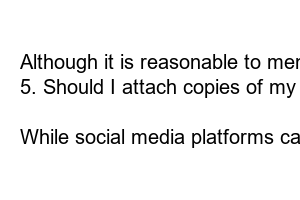지하철 민원문자
Title: How to Effectively Write a Subway Complaint Letter: Be Heard and Get Results
Subheading 1: Introduction
Are you tired of experiencing poor service or encountering issues during your subway commute? Writing a well-crafted complaint letter can be an effective way to raise your concerns and initiate positive changes. This blog post will guide you through the process of writing a powerful subway complaint letter that ensures your voice is heard.
Subheading 2: Getting Started
To create a compelling complaint letter, begin by clearly outlining the details of your experience. Make sure to include the date, time, and specific location where the incident occurred. State the problem concisely and **articulate the impact** it had on you. Emphasizing how the situation made you feel will help the reader understand the gravity of the issue.
Subheading 3: Elaborating on the Problem
Next, provide more context regarding the problem you encountered. Be clear and **provide specific details** to paint a complete picture. Explain any attempts you made to resolve the issue on the spot and specify any subway staff members you interacted with. Remember to express your disappointment politely instead of resorting to offensive language.
Subheading 4: Suggesting Solution
Offering practical solutions demonstrates your commitment to improving the situation and encourages a prompt resolution. Be precise in outlining the steps that the subway authority could take to rectify the issue. Proposing viable solutions will present you as a constructive and empathetic individual.
Subheading 5: Requesting Prompt Action
In this section, **encourage a swift response** by emphasizing the urgency of resolving the matter. Clearly communicate the inconvenience caused by the incident and how it affects your daily life or commuting experience. By eliciting a sense of empathy, you increase the likelihood of a timely resolution.
Subheading 6: Expressing Confidence in Improvement
End the complaint letter by expressing your belief in the subway authority’s commitment to service excellence. Maintain a positive tone and convey your hope that the issue will be resolved satisfactorily. By expressing optimism, you encourage an amicable resolution and foster a positive relationship.
Subheading 7: Include Supporting Evidence
If you have any supporting evidence such as photographs, videos, or witness statements, attach them to the complaint letter. This will add credibility to your assertions and strengthen your case. Remember to mention any supporting documents in your letter to convey a comprehensive understanding of the issue.
Summary:
Writing an effective subway complaint letter involves providing specific details, suggesting solutions, and requesting prompt action. By adopting a friendly and positive tone, you can convey your dissatisfaction while maintaining a constructive approach. Including supporting evidence will further bolster your case. By following these guidelines, you can ensure your voice is heard and increase the chances of achieving a satisfying resolution to your subway complaint.
FAQs:
1. How long should my subway complaint letter be?
Your letter should be concise, ideally one to two pages, focusing on the relevant details and key points of your complaint.
2. Should I send my complaint letter via email or mail?
Sending your complaint letter through email is often quicker and more efficient. However, if you prefer a more formal approach, mailing a hard copy is also acceptable.
3. What should I do if I don’t receive a response to my complaint?
If you do not receive a response within a reasonable timeframe, consider following up with a polite request for an update. Alternatively, you may escalate the matter to higher-level authorities or regulatory bodies.
4. Is it necessary to mention any compensation I expect in my letter?
Although it is reasonable to mention any compensation you believe is appropriate, focus primarily on resolving the issue at hand. Compensation can be discussed as part of the resolution process.
5. Should I attach copies of my tickets or receipts to the complaint letter?
Unless specifically requested, it is not necessary to attach copies of your tickets or receipts. However, retaining these documents for your records is advisable in case further evidence is needed.
6. Can I submit a complaint on social media instead?
While social media platforms can be an effective medium for raising concerns publicly, it is still advisable to submit a formal complaint letter directly to the appropriate subway authority. This will ensure a comprehensive investigation and avoid potential miscommunication.

